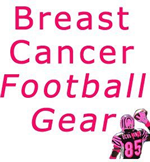The Lowdown on Triple Negative Breast Cancer
Triple negative breast cancer has earned a bad reputation amongst advocates and survivors. Let’s take a closer look at why it is considered the deadliest form of breast cancer today:
Triple negative breast cancer means that the cancer cells do not contain receptors to estrogen, progesterone and the human epidermal growth factor receptor 2 (HER2).
These three substances are what commonly causes breast cancer and are the target for most chemotherapeutic drugs. For example, if a patient tested positive for estrogen receptors, she will be given drugs designed to bind to those specific receptors. This will enable the drug to enter the cells and destroy them. Triple negative cancer cells do not contain any receptors that can respond to common chemotherapy drugs used today. This is what makes triple negative cancers harder to treat.
Triple negative cancers commonly occur in women in their late twenties and early twenties as well as those with African American descent. About fifteen percent of breast cancers diagnosed turns out to be triple negative.
Management of the disease will depend on the stage it was discovered. Treatment options include surgery, chemotherapy and radiation therapy.
The Triple Negative Breast Cancer Foundation is at the forefront of the fight against TNBC. They give away this helpful Guide To Understanding Triple Negative Breast Cancer for free on their website for women or family members who wants to know more about the disease. Unlike other brochures that focus on risk reduction and treatment, the TNBC brochure also tackles common emotions experienced during the journey shared by survivors of the disease.
Even with a triple negative diagnosis, there is still a big chance that the cancer will be beat with treatment. Early detection is still the best way to beat breast cancer. Get tested today!
Looking for Pink Ribbon Items? Visit Suddora and use the coupon code BCFG10 for 10% OFF your order! Including great items like:

